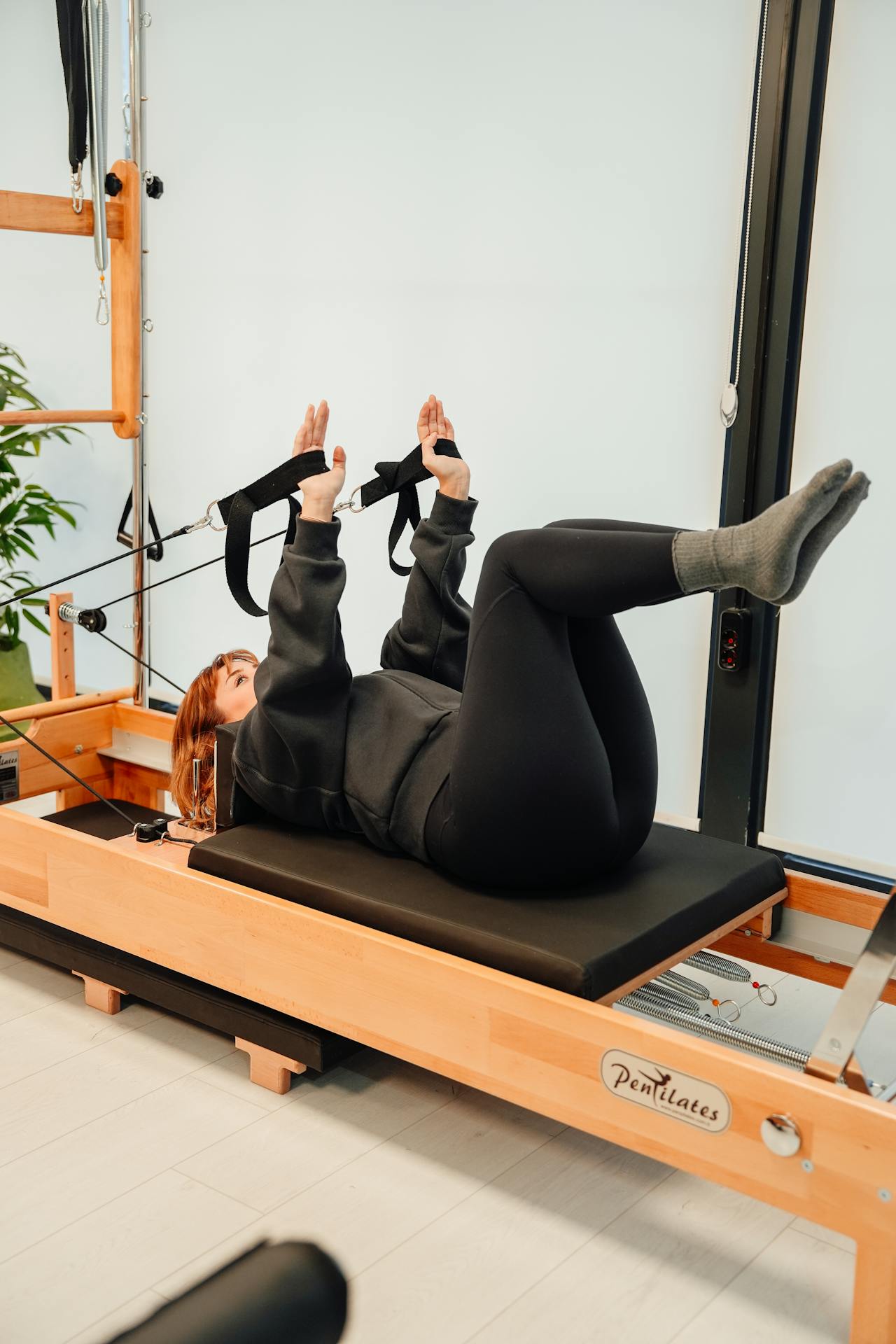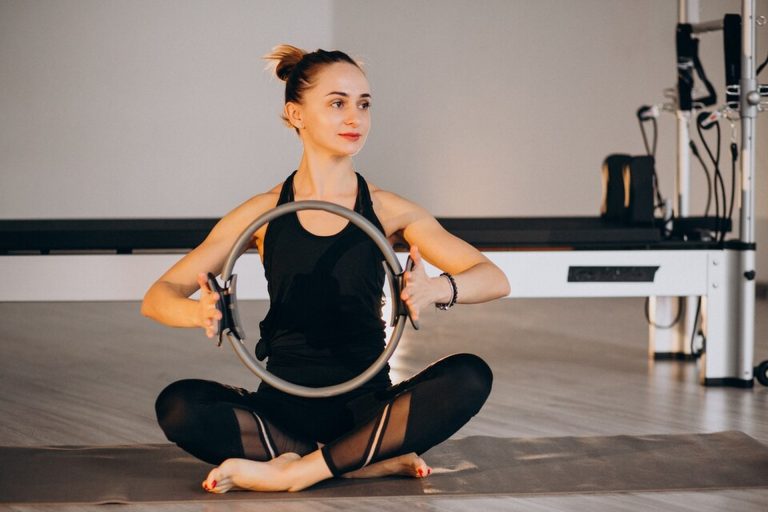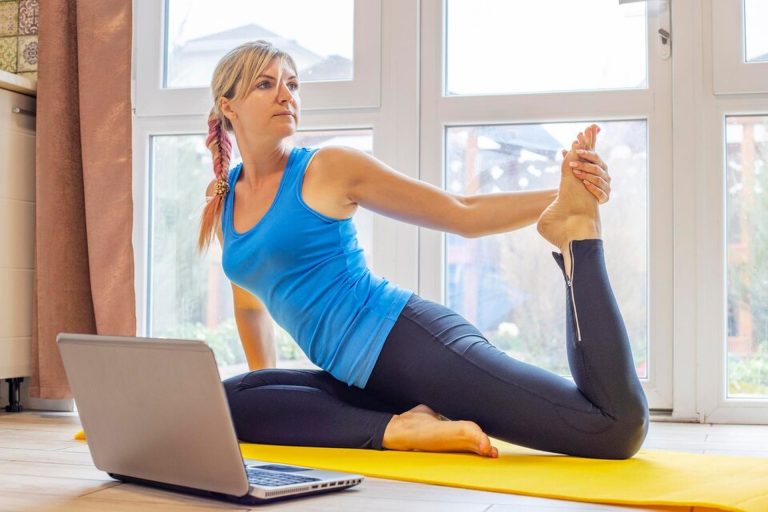Diastasis recti is one of those conditions people often don’t talk about—until they start noticing something feels off in their core. Whether you’re a new mom, a fitness enthusiast, or someone dealing with abdominal weakness or bulging, diastasis recti can impact how you move, breathe, and feel every day.
And if you’ve been told to “just do ab work to fix it,” you may have discovered the hard way that not all core exercises are safe—in fact, some can make it worse.
That’s where Pilates comes in.
Pilates has gained a reputation for being a smart, safe, and therapeutic approach to core strengthening—but is it actually good for healing diastasis recti?
In this article, we’ll break down what diastasis recti is, how Pilates addresses it, which exercises to avoid, and how to use Pilates for long-term core restoration.
What Is Diastasis Recti?
Diastasis recti is the separation of the rectus abdominis muscles—commonly known as the “six-pack”—which occurs when the connective tissue (called the linea alba) stretches and thins. It’s most common in:
- Pregnant and postpartum women
- People who’ve experienced rapid weight gain or loss
- Those with poor core mechanics or chronic intra-abdominal pressure
This condition leads to a visible bulge or “doming” of the stomach, especially when doing things like sitting up, coughing, or lifting. But beyond appearance, it can contribute to:
- Lower back pain
- Poor posture
- Pelvic floor dysfunction
- Weakness during daily movements
Healing diastasis recti requires rebuilding the deep core muscles—particularly the transverse abdominis (TVA)—in a way that encourages the linea alba to regain tension and function.
Why Pilates Can Help with Diastasis Recti
Pilates is uniquely positioned to support diastasis recti healing for several reasons:
1. It Strengthens the Deep Core, Not Just the Surface Muscles
Unlike traditional crunches and sit-ups that primarily engage the rectus abdominis, Pilates emphasizes transverse abdominis activation—the muscle that acts like an internal corset, wrapping around the torso and supporting the spine.
By targeting the TVA through controlled breathing and movement, Pilates helps rebuild your core from the inside out.
2. Pilates Teaches Breath-Driven Movement
Breath is foundational in Pilates. The method teaches lateral (ribcage) breathing paired with gentle engagement of the pelvic floor and deep abdominals.
This connection between breath and movement is especially important for diastasis recti because:
- Proper breathing reduces intra-abdominal pressure
- Exhaling during exertion prevents bulging of the abdominal wall
- It supports pelvic floor health (often compromised alongside diastasis)
3. Pilates Encourages Neutral Alignment and Spinal Stability
Many people with diastasis recti develop poor posture due to core weakness—think collapsed ribs, flared abs, or exaggerated lumbar curves. Pilates helps restore neutral alignment through:
- Pelvic placement cues
- Shoulder and rib positioning
- Core engagement while maintaining natural curves of the spine
This posture awareness is critical for healing, as correct alignment supports better core activation and reduces strain on the abdominal wall.
4. It’s Low-Impact and Easily Modifiable
One of the biggest benefits of Pilates is that it can be customized to meet you exactly where you are. Whether you’re early postpartum or years into recovery, Pilates can:
- Be practiced lying down, seated, or on hands and knees
- Avoid strain and high-impact movements
- Focus on quality over quantity
This makes it safer than many traditional fitness programs for those with abdominal separation.
5. Pilates Promotes Mind-Body Awareness
People with diastasis recti often lose connection to their core. Pilates retrains this connection through mindful, slow movements that teach you how to:
- Engage without gripping
- Activate without bearing down
- Move without compensation
Over time, you’ll feel more in tune with your body’s needs and limits.
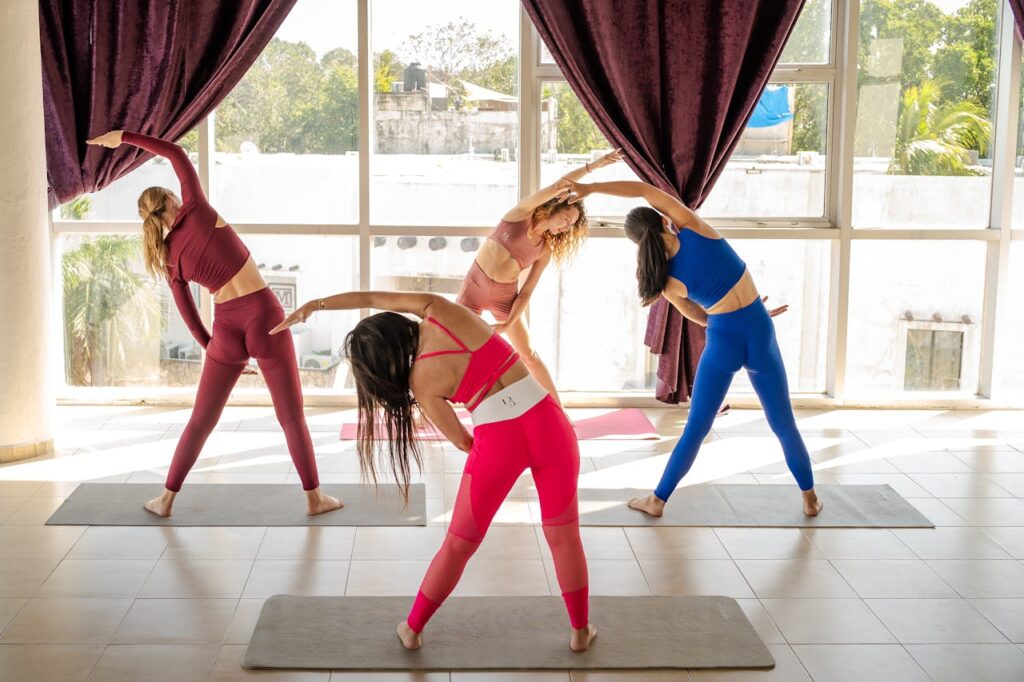
Exercises in Pilates That Are Good for Diastasis Recti
Here are some Pilates-inspired movements and principles that are particularly effective for healing diastasis recti:
1. TVA Breathing (Core Activation)
- Lie on your back, knees bent, spine neutral.
- Inhale into your ribs; exhale while gently drawing the belly button toward the spine.
- Hold the contraction for a few seconds.
- Repeat 8–10 times daily.
2. Pelvic Tilts
- Lie on your back, knees bent.
- Inhale to prepare.
- Exhale and gently tilt your pelvis to flatten the lower back into the mat.
- Inhale to return to neutral.
- Repeat 10–12 times.
3. Toe Taps
- Start in tabletop position (legs lifted, knees at 90 degrees).
- Gently lower one toe to the mat, then return.
- Alternate sides for 10 reps.
- Keep abs engaged and avoid bulging.
4. Side-Lying Leg Work
- Strengthens hips and glutes without placing pressure on the front abdominal wall.
- Great for improving pelvic stability and posture.
5. Quadruped Arm and Leg Reach (Bird Dog)
- On hands and knees, engage your core.
- Extend one leg and the opposite arm.
- Keep your spine and pelvis stable.
- Repeat 8–10 reps per side.
These exercises teach your body to stabilize and strengthen the core in functional, controlled ways—without overloading the vulnerable linea alba.
Pilates Exercises to Avoid with Diastasis Recti
While Pilates can be incredibly healing, not every Pilates exercise is safe if you have moderate to severe separation. Some movements create too much intra-abdominal pressure or stress the connective tissue.
Avoid these unless cleared by a specialist:
- Traditional sit-ups or roll-ups
- Hundreds (especially with both legs lifted)
- Criss-cross bicycle legs
- Double leg lowers
- Teaser or V-sit
- Planks (unless heavily modified)
The general rule: If your stomach “cones” or bulges out during the movement, it’s too much.
Can Pilates Fully Heal Diastasis Recti Without Surgery?
For most people, the answer is yes—with the right approach.
Diastasis recti that is mild to moderate often does not require surgery and can be effectively treated through:
- Consistent core retraining
- Functional movement habits
- Breath-based abdominal engagement
- Avoiding activities that increase pressure on the abdominal wall
However, for severe cases—especially when accompanied by a hernia or significant connective tissue damage—surgical intervention may be necessary. Even then, Pilates can play a valuable role before and after surgery to strengthen supportive muscles and speed recovery.
Key takeaway: Pilates won’t “snap” the muscles back together—but it will retrain how your body functions, helping you close the gap safely over time.
How Pilates Compares to Other Diastasis Recti Recovery Methods
Wondering how Pilates stacks up next to physical therapy, yoga, or standard ab workouts?
| Method | Core Focus | Safe for Diastasis? |
|---|---|---|
| Traditional Ab Work | Surface | Often harmful |
| Yoga | Mixed | Depends on style |
| Physical Therapy | Deep | Yes (when guided) |
| Pilates | Deep | Yes (with modification) |
Pilates blends the core retraining benefits of PT, the breath awareness of yoga, and the structured progressions of a fitness routine—making it one of the most holistic options available.
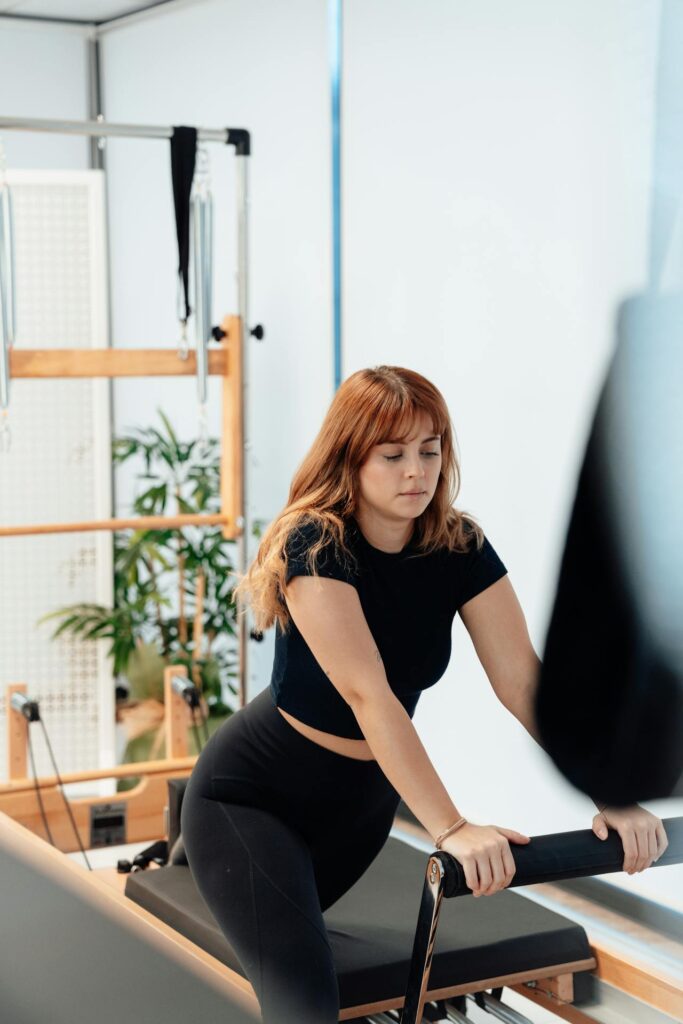
Tips to Support Healing Alongside Pilates
Healing diastasis recti takes more than exercise alone. Here are some complementary habits that support your Pilates work:
- Watch Your Posture Throughout the Day
Slouching or rib flaring can undo your progress. Aim to keep a tall, neutral spine even when seated or standing. - Use Proper Lifting Mechanics
Always exhale when lifting children, groceries, or anything heavy. Engage your core to avoid doming. - Stay Hydrated and Eat Nutrient-Dense Foods
Tissue healing requires adequate protein, vitamins (like C and D), and hydration. - Get Enough Sleep
Hormones that aid tissue recovery are released during deep sleep. - Address Pelvic Floor Issues Simultaneously
The core and pelvic floor are deeply connected. Leakage, heaviness, or prolapse symptoms may need to be addressed in tandem.
When to See a Professional
While Pilates is generally safe, it’s a good idea to consult a women’s health physical therapist or qualified Pilates instructor if:
- Your abdominal gap is wider than 2.5 fingers and hasn’t improved after 6–8 weeks
- You experience bulging, doming, or pain during basic movements
- You suspect a hernia or pelvic organ prolapse
- You feel disconnected from your core despite regular exercise
These professionals can assess your alignment, breathing, and core function to guide you more effectively.
Should You Take a Specialized Postnatal Pilates Class?
If you’re postpartum or newly diagnosed with diastasis recti, look for:
- A Pilates instructor trained in pre/postnatal movement or diastasis recti rehabilitation
- Physical therapists who integrate Pilates principles
- Small-group or private sessions for proper monitoring
These specialized classes help ensure:
- You’re doing the right exercises
- You’re not accidentally making the condition worse
- You progress gradually and safely
How Often Should You Do Pilates for Diastasis Recti?
Consistency matters more than intensity.
A good starting point:
- 10–15 minutes, 3–5 times per week
- Focus on breathwork and TVA activation
- Progress gradually to longer sessions (30–45 minutes) as your strength improves
Once your core is stronger and separation begins to close, you can reintroduce more advanced Pilates movements—with guidance.
How Long Does It Take to See Results?
Everyone’s healing timeline is different. Factors that affect progress include:
- Severity of the separation
- Whether you’ve been pregnant recently
- Hormonal status (especially early postpartum)
- Nutrition, sleep, stress, and daily movement habits
However, with consistent Pilates-based work:
- Within 4–6 weeks: Increased core awareness and better posture
- After 8–12 weeks: Visible improvement in abdominal tone, strength, and separation
- Long term: Full integration of core strength into daily movement, reduced pain, and better function
Read Also: Pilates Myths Debunked: 7 Common Lies You Need to Stop Believing
Final Thoughts: Is Pilates Good for Diastasis Recti?
Absolutely—when done properly.
Pilates offers a smart, body-aware approach to healing that prioritizes core function over flat abs. With its focus on deep abdominal engagement, breath control, and spinal alignment, Pilates helps you rebuild strength where it matters most—at the deepest layers of your core.
That said, not all Pilates is created equal. Stick with gentle, guided routines and avoid high-load or high-pressure movements until you’re truly ready.
If you’re unsure where to start, consider working with a Pilates instructor who has experience with postpartum and core rehabilitation. They’ll help tailor the approach to your unique needs and provide long-term support on your healing journey.
Healing from diastasis recti isn’t about bouncing back—it’s about building back smarter and stronger. And Pilates is one of the best tools to help you do exactly that.

